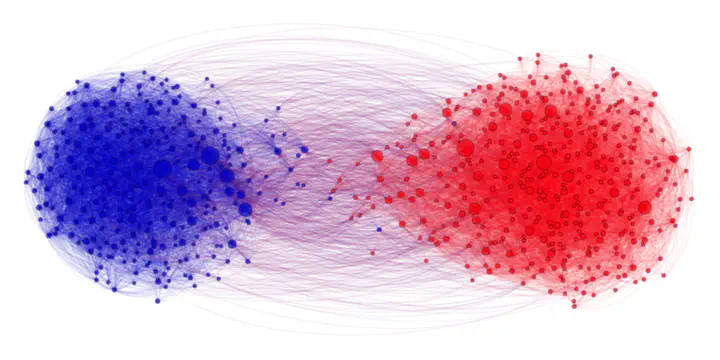 Network of political blogs during the 2004 U.S. presidential election. Democratic and republican blogs are represented by blue and red circles, respectively.
Network of political blogs during the 2004 U.S. presidential election. Democratic and republican blogs are represented by blue and red circles, respectively.Abstract
This paper proposes and explores a new quantitative characterization of the polarization phenomenon in networks. We first characterize the homophily of each node individually. We depart from the definition of a new measure of the homophily of the nodes of a network, and we consider the homophily distribution over the nodes as a primary indicator of the strength of polarization. Next, to address the polarization of the network as a whole, a probabilistic approach is developed. The approach is based on the straightforward computation of empirical cumulative distribution functions of sampled data from the network. These empirical distributions provide a more insightful understanding of the status of the network. They may be used not only to compare the polarization of groups of nodes or entire networks, but also to estimate the impacts of external interventions in terms of node polarization. The usefulness of the approach is illustrated in several case studies associated with real-life data sets from different sources.